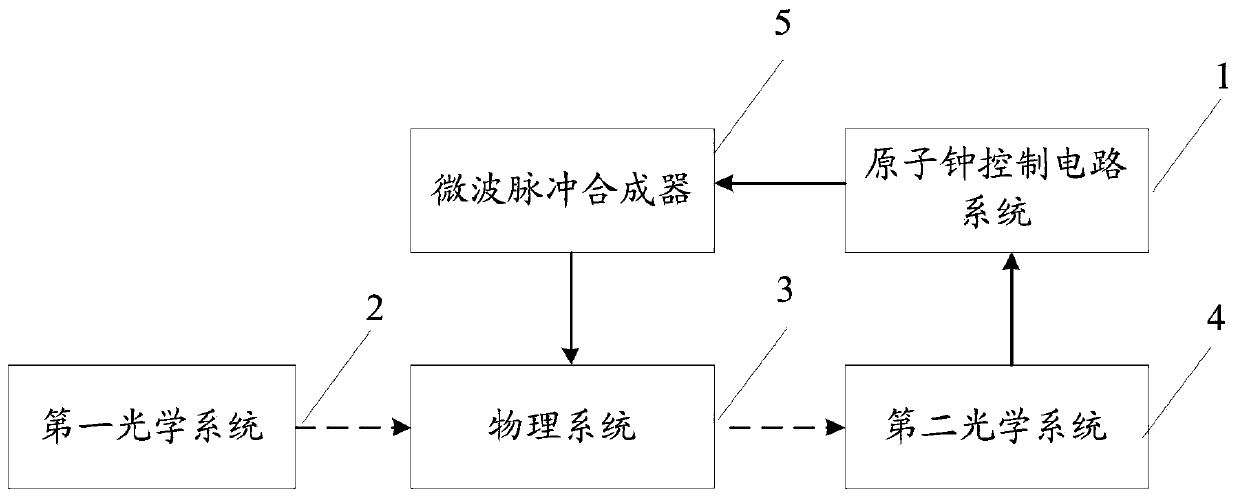Atomic clock frequency discrimination signal detection system
A signal detection and atomic clock technology, applied in the field of optical detection, can solve the problems of small absolute intensity of light signal, limited length of rubidium bubble, small rotation angle, etc., to eliminate mechanical jitter, improve signal-to-noise ratio, and improve frequency stability Effect
- Summary
- Abstract
- Description
- Claims
- Application Information
AI Technical Summary
Problems solved by technology
Method used
Image
Examples
Embodiment approach
[0050] As an implementation, the first optical system 2 of the present invention includes:
[0051] Laser 21, used to generate 795nm laser;
[0052] The isolator 22 is arranged on the output optical path of the laser 21, and is used for the one-way passage of the laser, preventing the laser from feeding into the laser 21;
[0053] The polarizer 23 is arranged on the output optical path of the isolator 22, and is used for converting the isolated laser light into linearly polarized light.
[0054] As an embodiment, the second optical system 4 of the present invention includes:
[0055] A quarter-wave plate 41 is arranged on the output optical path of the physical system 37, and the optical axis direction of the quarter-wave plate 41 is the same as that of the polarizer 23 for linearly polarizing The light becomes elliptically polarized light;
[0056] The photoelastic modulator 42 is arranged on the output optical path of the quarter-wave plate 41, the angle between the optic...
PUM
 Login to View More
Login to View More Abstract
Description
Claims
Application Information
 Login to View More
Login to View More - R&D
- Intellectual Property
- Life Sciences
- Materials
- Tech Scout
- Unparalleled Data Quality
- Higher Quality Content
- 60% Fewer Hallucinations
Browse by: Latest US Patents, China's latest patents, Technical Efficacy Thesaurus, Application Domain, Technology Topic, Popular Technical Reports.
© 2025 PatSnap. All rights reserved.Legal|Privacy policy|Modern Slavery Act Transparency Statement|Sitemap|About US| Contact US: help@patsnap.com



